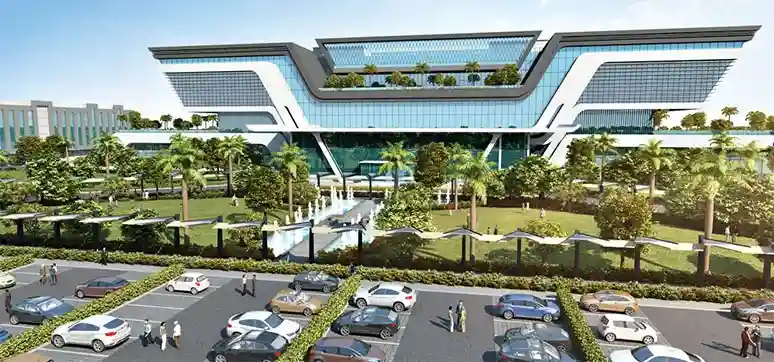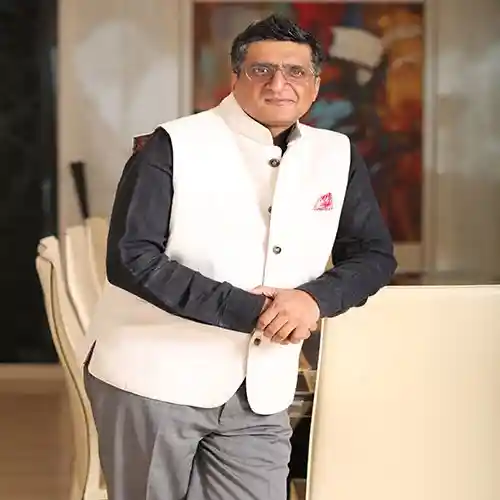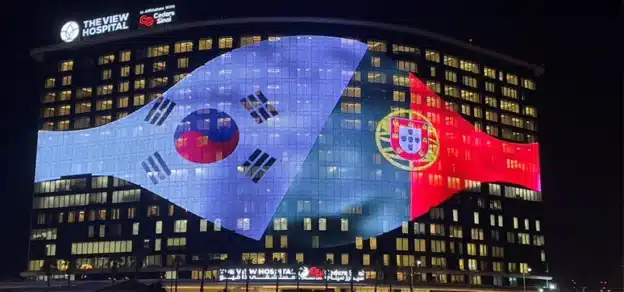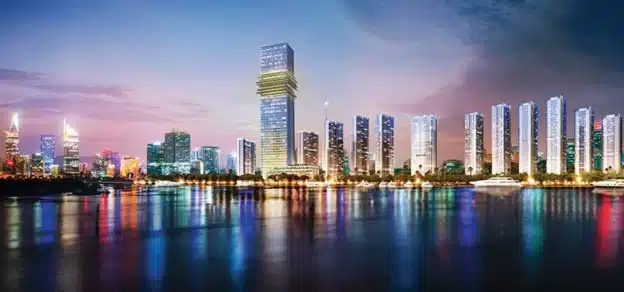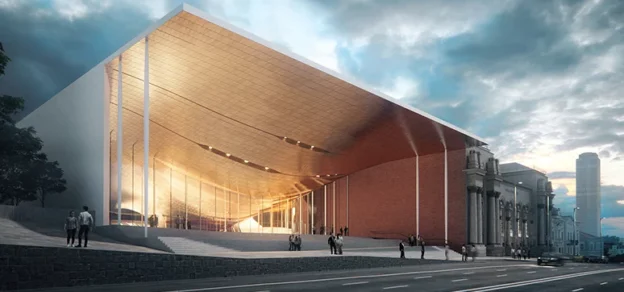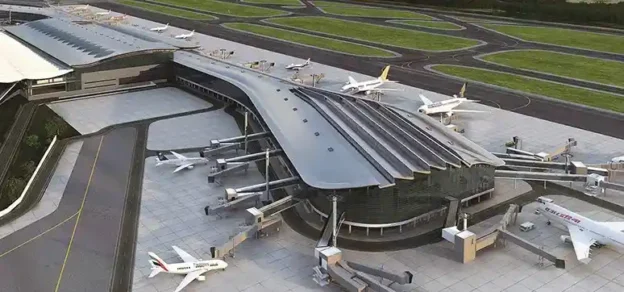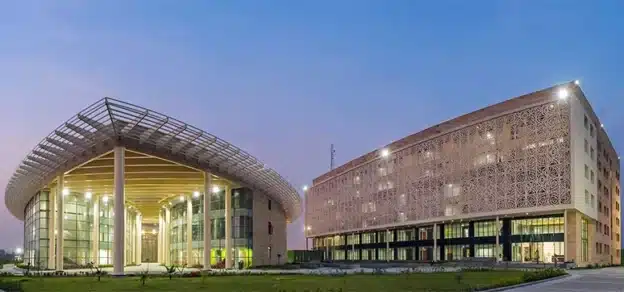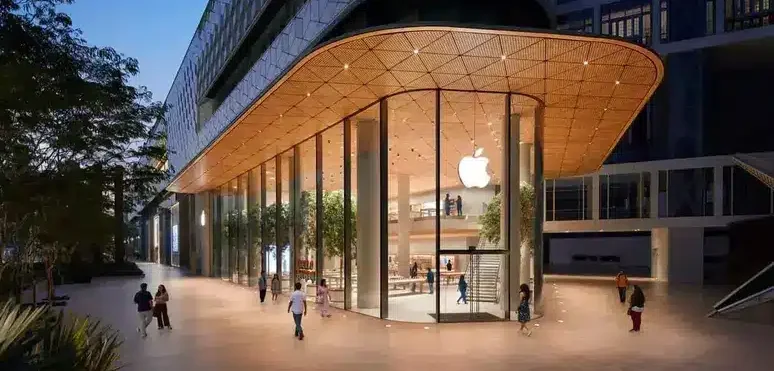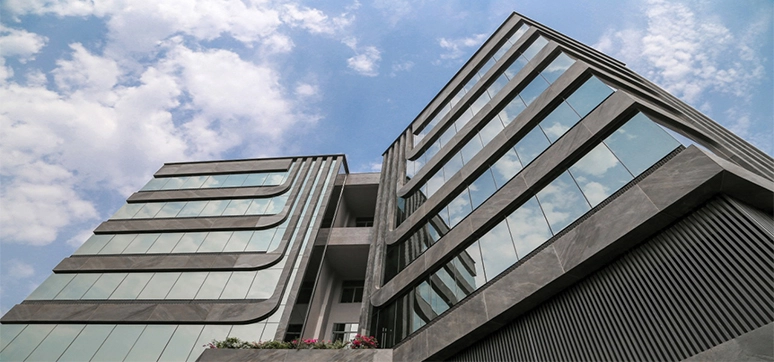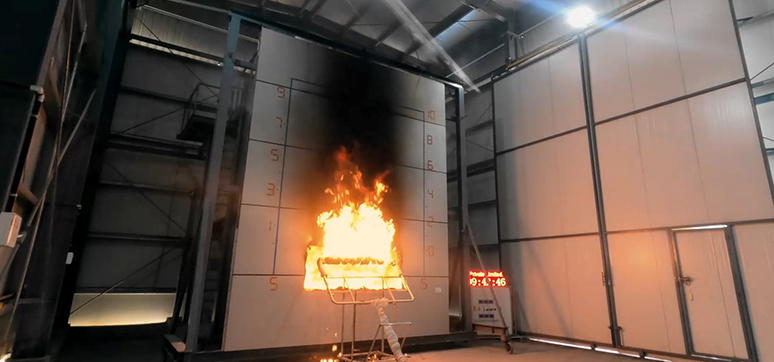The design of an appropriate building façade plays a very important role in healing in health care projects. The façade protects the people occupying the building and plays a major role in regulating the indoor environment
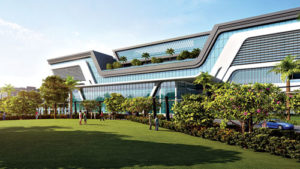
Designing smart building envelopes translates into both tangible and intangible benefits. The tangible benefits can be – a reduction in consumption of building materials, energy and operation and maintenance costs. The intangible benefits are better assistance in patient’s recovery and healing along with reduction in stress and improvement in the overall healthcare environment which can be achieved as an outcome of physical and visual connections to the natural environment along with thermal and acoustic comfort.
The design and material specifications of the building envelope play a major role in determining the amount of energy a building will use in its operation. The design of the building façade is governed by the performances expected out of it.
The basic performances expected out of a building façade are:
- Providing thermal comfort
- Providing acoustic comfort against the external noise
- Enhancing indoor ambience by providing adequate task-based daylighting
- Protecting the indoors from wind and rain while maintaining adequate visual connectivity to the outdoors
- Control of air infiltration
- Ease of maintenance
- Aesthetics
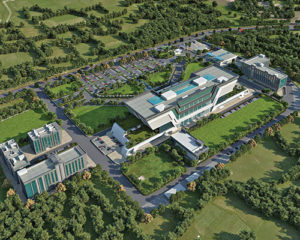
The National Cancer Institute (NCI) is proposed as a state-of-the-art 500 bedded, oncology centre, one of its kind specialty hospital for cancer treatment in Nagpur. Spread across an area of 23.5 acre site, the institute plans to fulfill its mission in three key phrases, incorporating comprehensive cancer centre, palliative care and sustainable charity.
The city of Nagpur enjoys a very dry or semihumid climate throughout the year except for the monsoon months of June to September. The climate of Nagpur can be broadly divided into three seasons, such as summer, where temperatures rise beyond 40 degrees Celsius accompanied by dry winds making the climate scorching hot, monsoon which is heavily dominated by south-westerly monsoon winds and the winter, which brings in the spine chilling cold. The tremendous climatic variation with scorching summers and chilling winters makes the process of designing climate-responsive buildings a challenging one.
There are certain challenges for maintaining human comfort in the building with reference to façade and fenestration. The overall elevation had to be designed in such a way that it made the building look approachable and yet create a sense of security and hope in the hearts of the patients. One of the most important performances required from the façade of the building was to keep out the heat of the sun in summers and encourage the penetration of its warmth indoors during winters. However, the challenges were countered by creating symmetry in the elevation which imparts the image of a healing centre with confidence.
The bold and confident character of the structure has been achieved by creating symmetry in the elevation which imparts the image of the healing centre with confidence. In this project, functionality has led the way and has evolved into aesthetics.
Materials Used For Façade & Fenestration:
- The curtain walls are designed as semi-unitised glazing in diamond shape grid, straight grid, semi-unitised glazing with horizontal fins and semi-unitised glazing with vertical metal fins.
- The glazing at the main entrance point is designed as a fixed spider glazing system.
- The glass railing is designed as an Aluminium ’U’ Channel system.
The features of the façade are composed less of glass and more of mass on the exterior to reduce the heat penetration into the building. The glass-to-wall ratio is maintained at 22 per cent. A glazing equivalent of 24 mm thk DGU reflected glass shall be used.
Study of sun path diagrams and wind analysis is done to design elements like sun shades, and deeper recesses, and aluminium louvers for fenestrations are incorporated to optimise requisite task-based lux levels and indoor temperature. The detailing of parapet walls and roofing is designed to allow the terrace gardens to flourish, these gardens help to lower the amount of heat penetration into the interiors of the top floor which in turn contributes to reducing the load on the HVAC system in summer.
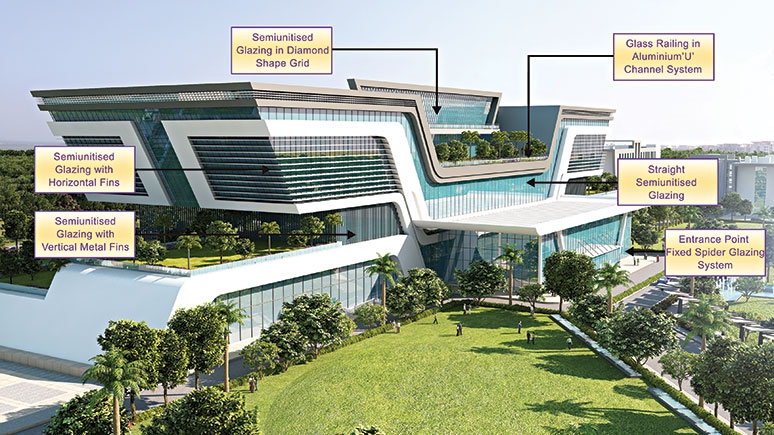
The curtain walls are designed as semi-unitised glazing in diamond shape grid, straight grid, semi-unitised glazing with horizontal fins and semi-unitised glazing with vertical metal fins.
In the semi-unitised glazed system, the vertical mullions and horizontal transoms are installed on MS/SS/aluminium brackets which are anchored to the columns/slabs. The glass is cut to size and is structurally glazed to the aluminium subframe by structural sealant. The subframe with the glass is installed on the grid work. In the above system, 50 per cent of the work is done at the site.
This system’s aluminium members are not visible from the outside, only the grooves running horizontally and vertically are seen. For the installation of this system, scaffolding from outside for installation needs to be erected.
The glazing at the main entrance point is designed as a fixed spider glazing system.
This system has been designed together by engineers and architects with the main objective of getting the most possible transparency and thus the clearest vision which is normally hindered by using the various construction elements. The spider system offers the most practical solutions to glass assembly.
To fix the glass up at the edges of the façade, one or two arms-accessories can be used. In special applications, the number of arms might be more than two and the sheet of glass can be fixed by one arm at each corner. The used accessories can be mounted against metal frames or against glass fins and tension rods are used to pull these accessories together.
The Glass Railing is Designed as Al.’U’ Channel System
The glass railing is designed as an Aluminium ’U’ Channel system, visually giving a light feel to the elevation.

The façade of NCI is also designed based on wind analysis.
As per the wind analysis, the basic wind speed in Nagpur is around 44 m / sec. The risk coefficient to be considered for façade design i.e. K1 = 1. The structure is identified as Category – 3 i.e., the structure located in terrain with closely spaced obstructions up to 10m height and falls under building class – C i.e., a structure having a length greater than 50m. The topography of the site is general plain ground and has K3 = 1. Wind pressure for the full height of the building is 1.5 KPa and wind pressure up to 10m height from the ground level is 1 KPa.
All the above factors are taken into consideration during the design of the façade and the selection of the building material for the same.
Elevation features arrived at as a response to the sun path diagram in Nagpur.

The building is oriented in such a manner that the shorter sides face east and west direction thereby reducing the surface area exposed to the early morning and late evening penetration of sun rays during hot summers.
- Sunrays penetration in East elevation during the spring equinox i.e. 21st MarchThe elevation of the building on the east and west is designed as an inclined surface with the roof overhang extending beyond the façade and has horizontal fins on the vertical façade designed such that it obstructs most of the sun rays coming inside the structure from 10 am to 12 noon and 2 pm to 5 pm thereby reducing the heating of the space in summer due to direct radiation.

Sunrays Penetration in South Elevation During Winter Solstice - The longer side of the building is oriented towards the south.
The south façade is designed as the longer side of the building with a straight vertical façade and has horizontal fins on the vertical surface designed such that they allow the penetration of the direct sunrays inside the building such that it helping in warming up the internal spaces during the chilled winter days.
The use of these design strategies for the façade helps in reducing the cooling and heating load on HVAC systems thereby reducing the energy consumption of the structure.

Fire requirements
The openable vent of a minimum 2.5 per cent of the floor area shall be provided as per fire requirements. The openable vent can be pop-out type or bottom hinged provided with a fusible link opening mechanism and shall also be integrated with an automatic smoke detection system.
An opening to the glass façade of a minimum width of 1.5m and height of 1.5m shall be provided on every floor at a level of 1.2m from flooring facing compulsory open space as well as on the side. A minimum of one such opening shall be provided at the interval of every 15m.
Material used for cladding shall be non-combustible and shall not emit toxic gasses and it shall be eco-friendly.
The project is in compliance with both the National Accreditation Board for Hospitals and the Joint Commission International (JCI). The project is based on the values of functionality, sustainability, energy efficiency, safety and aesthetics with features designed to target a Gold Rating under the IGBC Green New Building Rating System.
QUICK FACTS
Project: National Cancer Institute
Location: Nagpur, Maharashtra, India
Client: Dr. Aabaji Thatte, Seva Aur Anusandhan
Sanstha
Architects: Hiten Sethi Architects, Mumbai
Build-up area: 7,00,000Sq.ft
Consultants: M/S Mahimtura Consultants
(Structural Design), M/S Godrej & Boyce
(Sustainable Design)
Commencement date: February 2015
Completion date: August 2017 (Phase 1); December
2018 (Phase 2)

